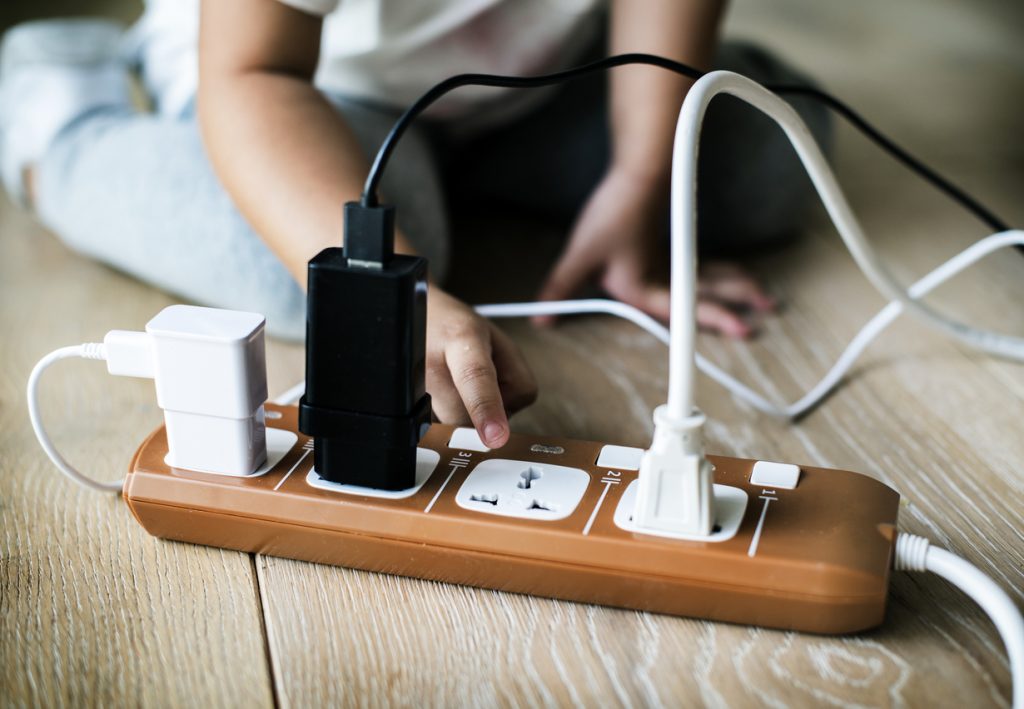Using a multi-socket extension cord can be incredibly convenient. For one, you can plug a light, your laptop, and your phone into one wall socket. However, a multi-socket extension cord can also be dangerous if you don’t use it correctly. Here are some tips for safely using a multi-socket extension cord.
1. Don’t Use Indoor Extension Cords Outdoors
Indoor extension cords are not as thick as outdoor extension cords. If left outdoors, especially in the sweltering El Paso summer heat, the extension cord could break or even melt. Remember, El Paso summers frequently see temperatures rise above 100 degrees Fahrenheit. In addition, the female socket at the end of an indoor extension cord is not designed to withstand the weather elements, such as morning dew, harsh sunlight, and any changes in temperature.
2. Don’t Plug Two Multi-Socket Extension Cords Together
If you aren’t close enough to an outlet, you may be tempted to plug two extension cords together. This is a bad idea, however, as you may overload and overheat the cords. In the worst-case scenario, you could end up with a fire.
3. Don’t Plug in Too Many Devices
A multi-socket extension cord may seem like the ideal solution for all your devices. However, try not to plug in too many high-power devices as you may overload the cord. You can plug in many electronic devices, but you wouldn’t want to plug in a heater and an air fryer, for example. Moreover, too many devices can cause your extension cord to overheat. This, in itself, is dangerous. Hopefully, you have a circuit breaker that can flip or a fuse box that will stop the flow of electricity before a fire results.
4. You Should Only Use an Extension Cord With a Three-Prong Plug
When you choose an extension cord with three prongs, you’re playing it safe. The third prong reduces any risks of shocks by grounding the electricity. If there is a surge of electricity, the third prong safely directs it to the ground.
5. Choose the Extension Cord Carefully
You’ll have to decide what appliances or devices you will be plugging into your extension cord before purchasing one. The round and thick low-gauge extension cords are better for larger appliances, while flat and thin extension cords work better for electronics. You also want to ensure that the cord you select can handle the total wattage of the electricity flowing through it.
6. Don’t Bend the Cords When You’re Using Them
When your extension cord is in use, it should lie flat. It shouldn’t be bent or twisted. And you shouldn’t nail or staple it to a wall. These bad practices can disrupt the flow of electricity.
When you need an electrician for indoor lighting, electrical panel issues, or code compliance questions, contact us at Secure Contractors. We serve El Paso and the surrounding areas.

